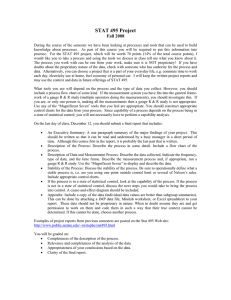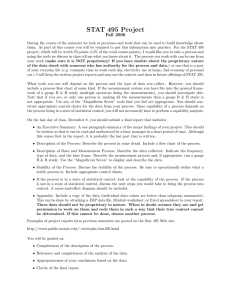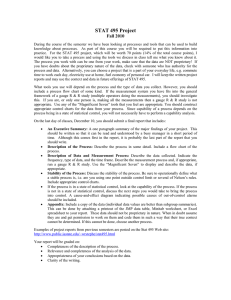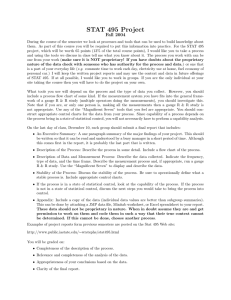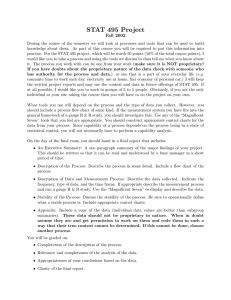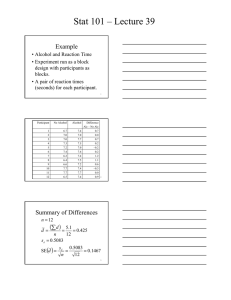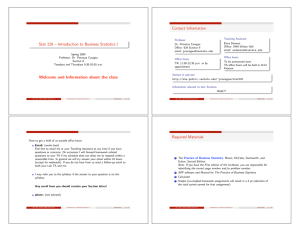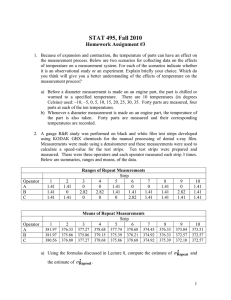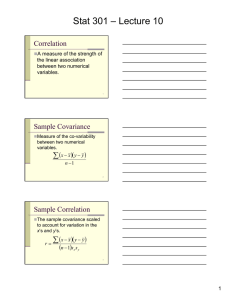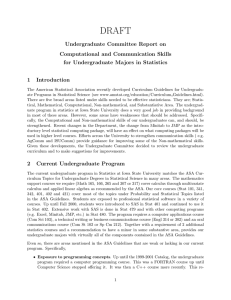STAT 495 Project Fall 2012
advertisement
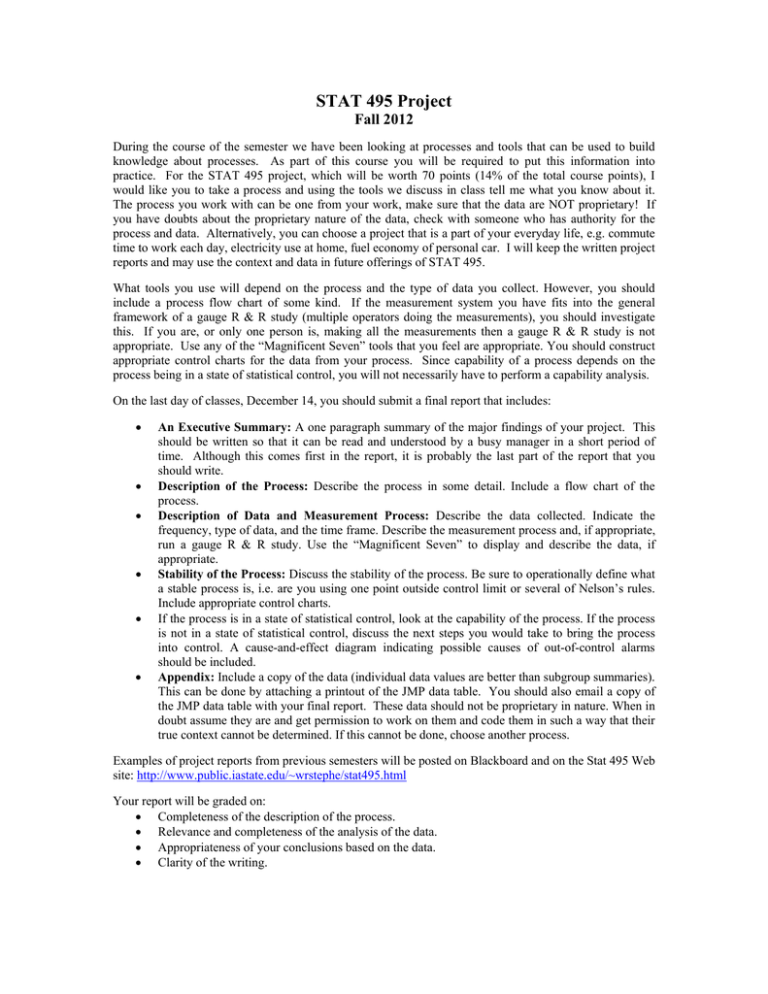
STAT 495 Project Fall 2012 During the course of the semester we have been looking at processes and tools that can be used to build knowledge about processes. As part of this course you will be required to put this information into practice. For the STAT 495 project, which will be worth 70 points (14% of the total course points), I would like you to take a process and using the tools we discuss in class tell me what you know about it. The process you work with can be one from your work, make sure that the data are NOT proprietary! If you have doubts about the proprietary nature of the data, check with someone who has authority for the process and data. Alternatively, you can choose a project that is a part of your everyday life, e.g. commute time to work each day, electricity use at home, fuel economy of personal car. I will keep the written project reports and may use the context and data in future offerings of STAT 495. What tools you use will depend on the process and the type of data you collect. However, you should include a process flow chart of some kind. If the measurement system you have fits into the general framework of a gauge R & R study (multiple operators doing the measurements), you should investigate this. If you are, or only one person is, making all the measurements then a gauge R & R study is not appropriate. Use any of the “Magnificent Seven” tools that you feel are appropriate. You should construct appropriate control charts for the data from your process. Since capability of a process depends on the process being in a state of statistical control, you will not necessarily have to perform a capability analysis. On the last day of classes, December 14, you should submit a final report that includes: An Executive Summary: A one paragraph summary of the major findings of your project. This should be written so that it can be read and understood by a busy manager in a short period of time. Although this comes first in the report, it is probably the last part of the report that you should write. Description of the Process: Describe the process in some detail. Include a flow chart of the process. Description of Data and Measurement Process: Describe the data collected. Indicate the frequency, type of data, and the time frame. Describe the measurement process and, if appropriate, run a gauge R & R study. Use the “Magnificent Seven” to display and describe the data, if appropriate. Stability of the Process: Discuss the stability of the process. Be sure to operationally define what a stable process is, i.e. are you using one point outside control limit or several of Nelson’s rules. Include appropriate control charts. If the process is in a state of statistical control, look at the capability of the process. If the process is not in a state of statistical control, discuss the next steps you would take to bring the process into control. A cause-and-effect diagram indicating possible causes of out-of-control alarms should be included. Appendix: Include a copy of the data (individual data values are better than subgroup summaries). This can be done by attaching a printout of the JMP data table. You should also email a copy of the JMP data table with your final report. These data should not be proprietary in nature. When in doubt assume they are and get permission to work on them and code them in such a way that their true context cannot be determined. If this cannot be done, choose another process. Examples of project reports from previous semesters will be posted on Blackboard and on the Stat 495 Web site: http://www.public.iastate.edu/~wrstephe/stat495.html Your report will be graded on: Completeness of the description of the process. Relevance and completeness of the analysis of the data. Appropriateness of your conclusions based on the data. Clarity of the writing.
